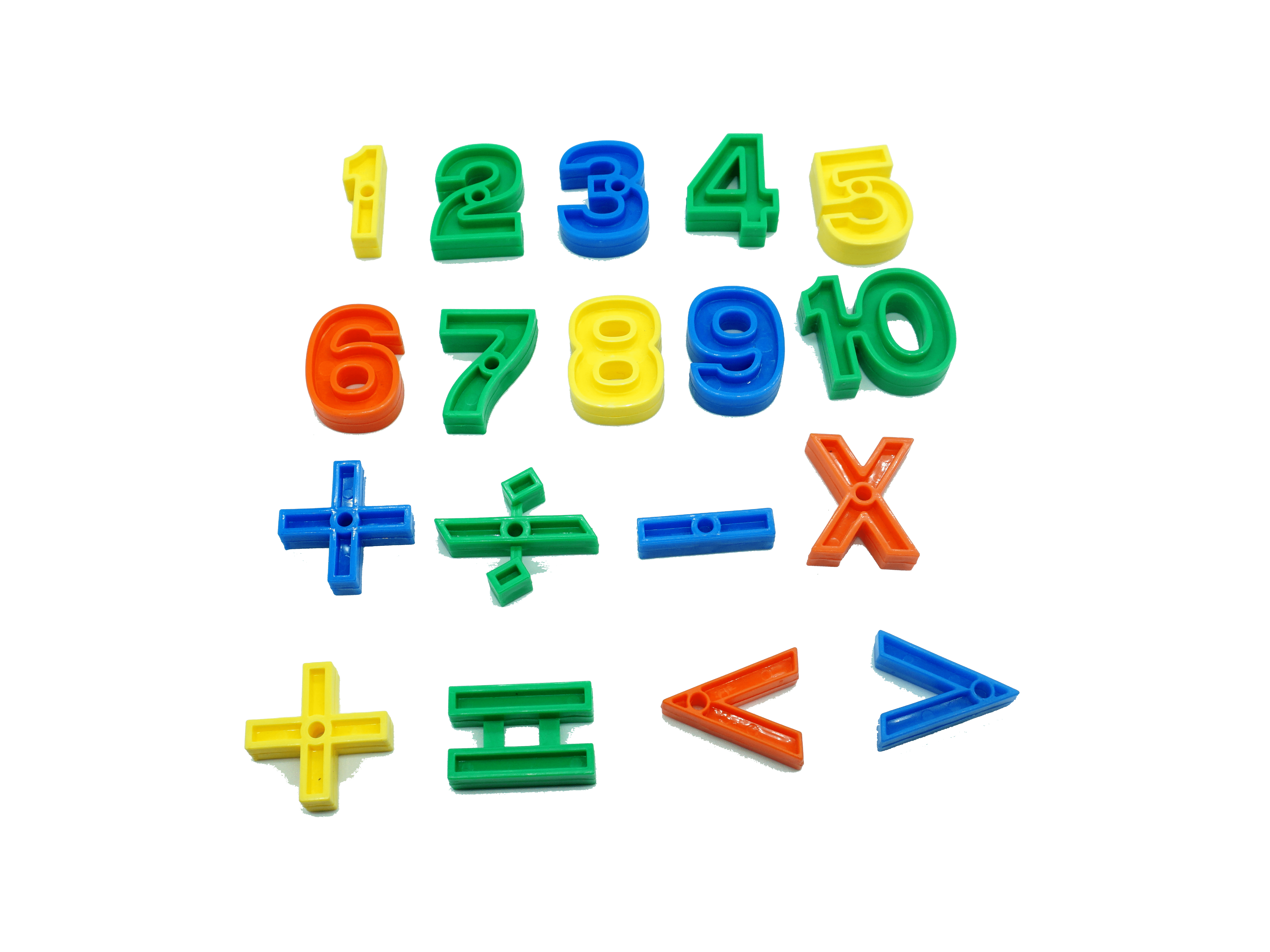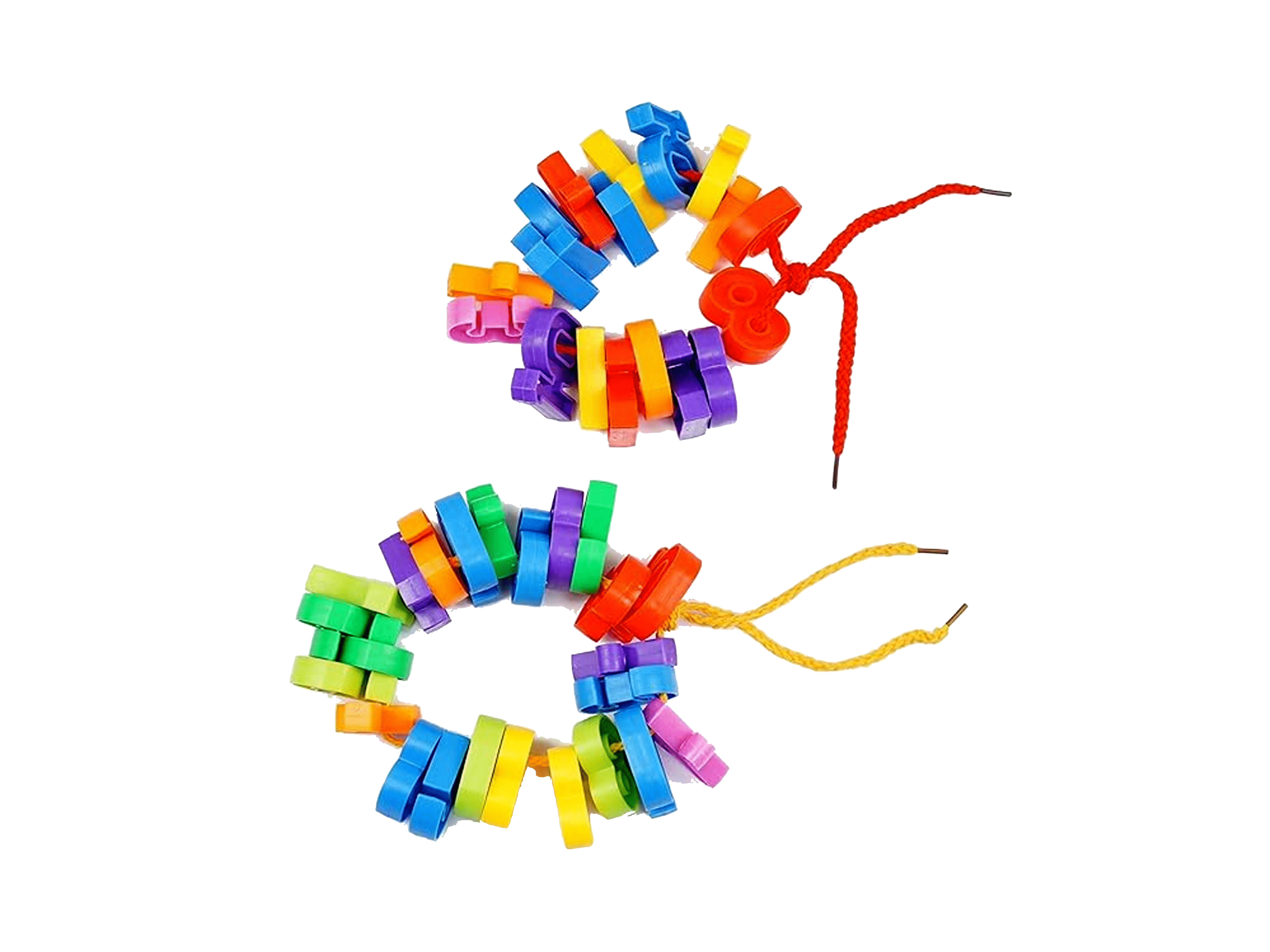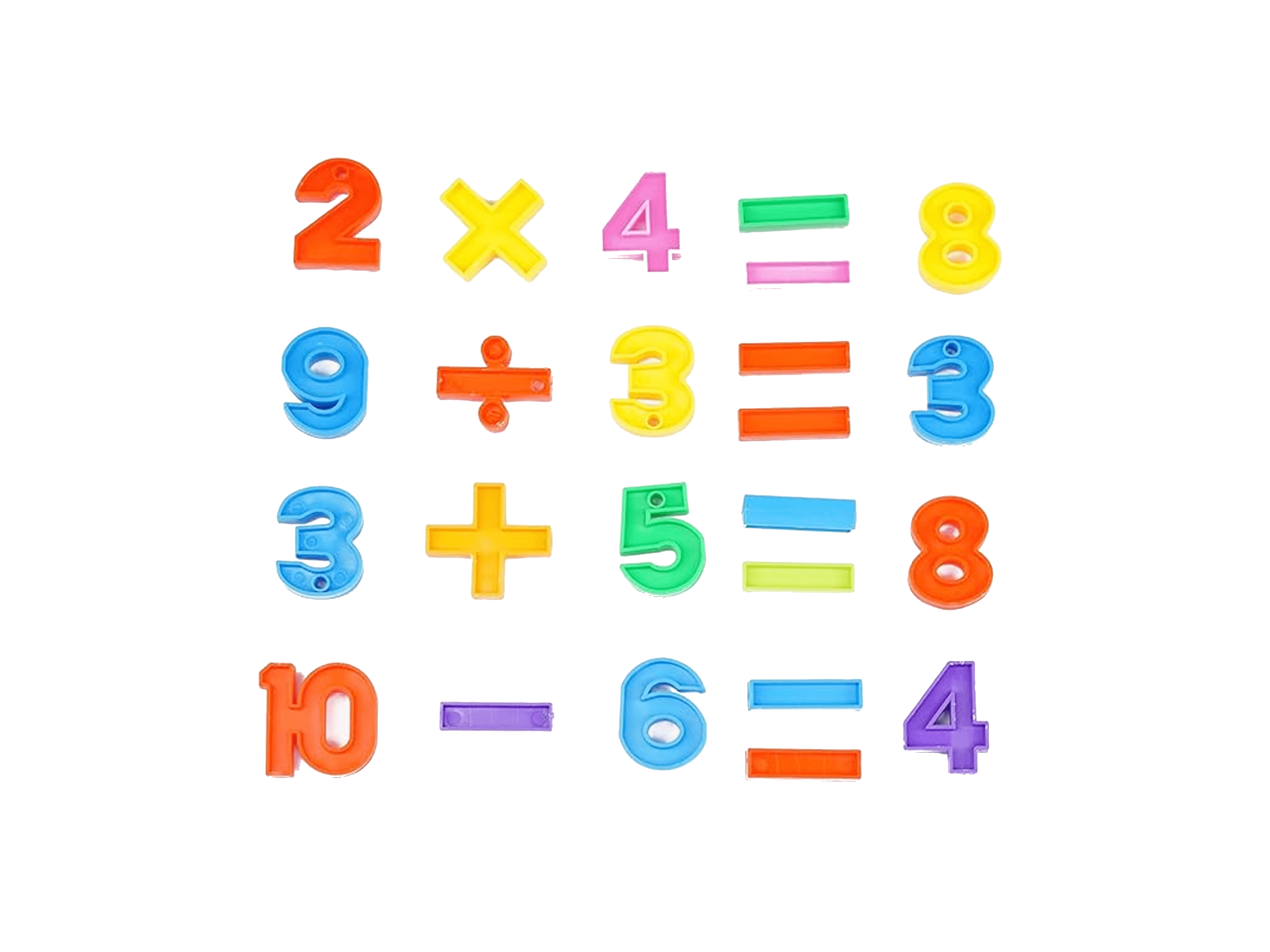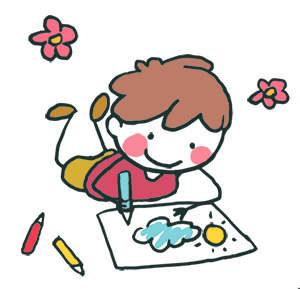Lacing numbers plastic toys are educational toys designed to help children learn and practice basic numerical skills while improving their fine motor skills. These toys typically consist of four set of plastic numbers, usually from 0 to 9, each with one hole drilled through them.
Lacing numbers plastic toys come with laces. The laces are threaded through the holes in the numbers, allowing children to practice their hand-eye coordination and develop their dexterity as they thread the numbers in numerical order or create patterns.
Lacing Numbers toys can be used in various ways to engage children in learning activities.
Here are a few examples:
Number Recognition: Children can practice identifying and naming the numbers as they lace them in order.
Counting: Children can count each number as they lace it, reinforcing their counting skills.
Pattern Creation: Children can lace the numbers to create patterns or sequences, such as alternating colors or ascending/descending order.
Simple Math Operations: Older children can use the lacing numbers to practice basic math operations like addition, subtraction Multiplication, division. For example, they can lace number 2, followed by number 3, and then find the number that represents the sum (number 5).
Comparison: Children can lace two numbers together and use the greater than (">"), less than ("<"), or equal to ("=") signs to compare them. For example, they can lace number 7, followed by the ">" sign, and then number 3. This would represent the comparison "7 > 3".
Comparison: Children can lace two numbers together and use the greater than (">"), less than ("<"), or equal to ("=") signs to compare them. For example, they can lace number 7, followed by the ">" sign, and then number 3. This would represent the comparison "7 > 3".
Overall, lacing numbers plastic toys provide a fun and interactive way for children to learn and reinforce their numerical skills while engaging in hands-on play. By engaging with these lacing numbers and symbols, children can gain a hands-on understanding of basic arithmetic operations and comparison concepts in a playful and interactive manner.









